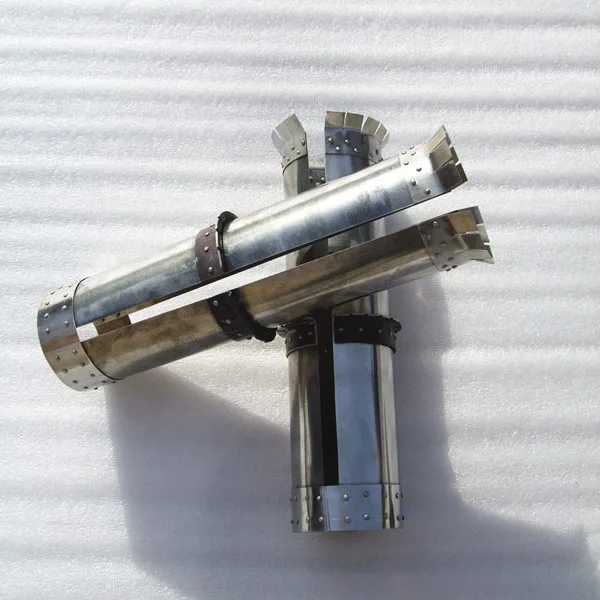Industrial Applications of Molybdenum Machining Components
Aerospace and Aviation
In the airplane business, molybdenum machining parts are key. These parts are used in airplane motors, where their high-temperature strength and protection from warm weariness are fundamental. Molybdenum composites are utilized in turbine cutting edges, burning chambers, and fumes spouts, adding to improved motor execution and life span. The low warm development coefficient of molybdenum guarantees layered solidness in basic aviation parts, going with it an ideal decision for accuracy parts in satellites and space vehicles.
Electronics and Semiconductor Manufacturing
The gadgets area vigorously depends on molybdenum machining parts for their exceptional properties. In semiconductor producing, molybdenum is utilized to make heat sinks, anodes, and backing structures in high-temperature heaters. Its fantastic electrical conductivity and low fume pressure make it reasonable for creating meager film semiconductors and Drove parts. Molybdenum's capacity to endure high temperatures without deformity is urgent in the creation of level board shows and sun based cells, where exact resistances are fundamental.
Energy and Power Generation
Molybdenum machining components find extensive use in the energy sector, particularly in power generation facilities. These components are employed in high-temperature environments such as nuclear reactors, where their resistance to radiation damage and thermal stress is invaluable. In fossil fuel power plants, molybdenum alloys are used in superheater tubes and turbine blades, enhancing the efficiency and lifespan of these critical components. The metal's corrosion resistance also makes it suitable for use in geothermal energy systems and offshore oil and gas platforms.
Specialized Uses of Molybdenum Machining Components
Medical and Healthcare Equipment
The clinical field benefits enormously from molybdenum machining parts. These parts are utilized in X-beam tubes, where molybdenum's capacity to deliver a particular frequency of X-beams is pivotal for mammography. In radiation treatment hardware, molybdenum parts help in exact bar collimation and safeguarding. The biocompatibility of specific molybdenum amalgams additionally makes them reasonable for use in prosthetics and careful instruments, where strength and erosion opposition are fundamental.
Chemical and Petrochemical Industries
Molybdenum machining parts assume an essential part in compound handling and petrochemical enterprises. Their outstanding protection from erosion, particularly in high-temperature and high-pressure conditions, makes them ideal for use in reactors, heat exchangers, and refining segments. Molybdenum amalgams are utilized in the development of synthetic substances like sulfuric corrosive and in the refining of oil based goods, where their sturdiness broadens the life expectancy of gear and decreases support costs.
Glass and Ceramic Manufacturing
In glass and ceramic manufacturing, molybdenum machining components are invaluable. The metal's high melting point and resistance to molten glass make it ideal for creating electrodes, stirrers, and molds used in glass production. Molybdenum components are also used in the manufacturing of advanced ceramics, where their ability to maintain strength at high temperatures is crucial. These components contribute to improved product quality and increased production efficiency in the glass and ceramic industries.
Emerging Applications and Future Prospects
Additive Manufacturing and 3D Printing
The field of added substance fabricating is progressively using molybdenum machining parts. In 3D printing applications, molybdenum powders are utilized to make complicated, high-strength parts for aviation and auto businesses. The metal's high softening point and warm conductivity make it appropriate for creating parts that can endure outrageous circumstances. As added substance producing advancements advance, the interest for molybdenum in this area is supposed to develop, opening up additional opportunities for complex and redid part plans.
Renewable Energy Technologies
Molybdenum machining components are finding new applications in renewable energy technologies. In solar energy systems, molybdenum is used in thin-film photovoltaic cells, where its conductivity and stability contribute to improved efficiency. The metal's corrosion resistance makes it valuable in wind turbine components, particularly in offshore installations where harsh marine environments pose significant challenges. As the renewable energy sector expands, the role of molybdenum components in enhancing the durability and performance of these technologies is likely to increase.
Advanced Transportation Systems
The transportation business is investigating new purposes for molybdenum machining parts. In electric vehicles, molybdenum is being researched for use in battery advances and power gadgets because of its warm administration properties. High velocity rail frameworks benefit from molybdenum parts in regions requiring high strength and wear opposition. As transportation advances develop towards additional effective and supportable arrangements, molybdenum's extraordinary properties position it as a vital material for future developments in this area.
Conclusion
Molybdenum machining components showcase remarkable versatility across numerous industries, making them invaluable in various applications. From aerospace and electronics to healthcare and renewable energy, these components play a crucial role in advancing technology and improving overall performance. Their unique properties, such as high melting points, excellent corrosion resistance, and thermal conductivity, enable them to excel in demanding environments. As industries continue to evolve, the potential applications for molybdenum machining components are likely to expand further, driven by the growing need for innovative solutions. For more information about this product, feel free to contact us at rmd1994@yeah.net.
